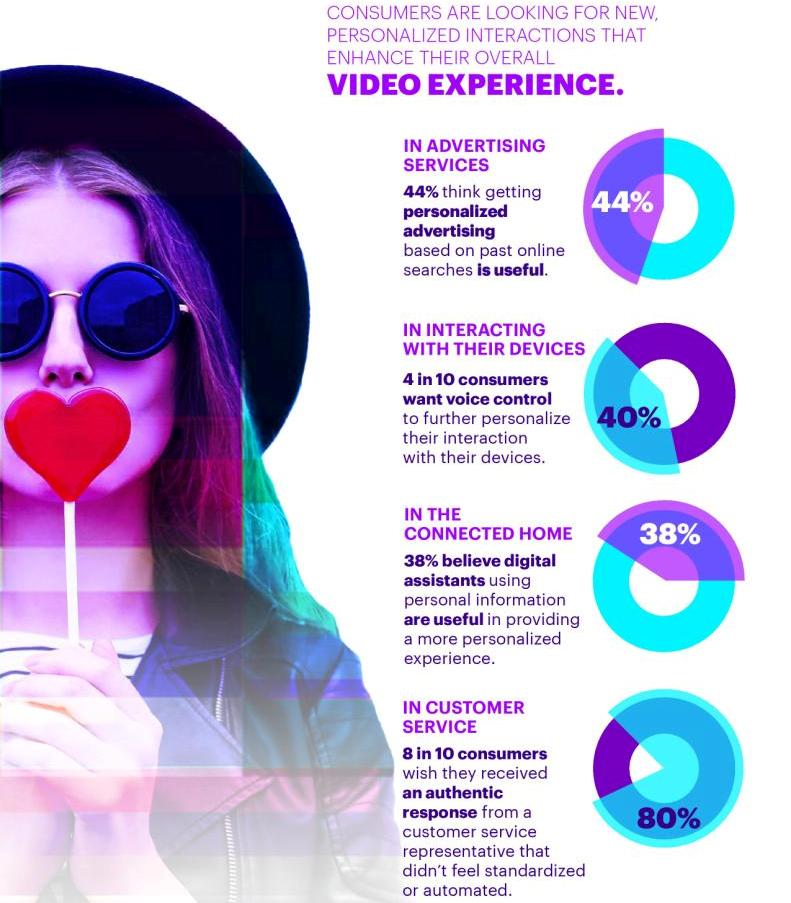Signaling an accelerating shift in the digital video consumer behavior, the percentage of consumers who prefer watching TV shows on television sets plummeted by 55 percent over the past year, from 52 percent to 23 percent, according to Accenture 2017 Digital Consumer Survey.
The global online survey of 26,000 consumers in 26 countries, including markets such as the UAE and Saudi Arabia, reveals that consumers increasingly prefer to watch TV shows on devices such as laptops, personal computers and smartphones. More than four in 10 consumers (42 percent) said they would rather view TV shows on a laptop or desktop, up from 32 percent in last year’s survey. Thirteen percent said they prefer watching TV shows on their smartphones, compared with 10 percent last year.
An Ongoing Decline
The decline in TV viewing over the past year tracks with a four-year trend. As recently as 2014, the survey revealed that nearly two-thirds (65 percent) of consumers preferred the TV set for viewing TV shows.
The most-recent findings of the Accenture report, Winning Experiences in the New Video World, show that only one in five consumers (19 percent) now prefer to watch sports games on their TVs, down from 38 percent in the prior-year survey.
 “The dominance of the TV set as the undisputed go-to entertainment device is ending. While a great number of people still watch plenty of TV shows on TV sets, our research uncovers a rapid acceleration in their preference for viewing on other digital devices — especially laptops, desktops and smartphones,” said Gavin Mann, Global Managing Director for Accenture’s broadcast business.
“The dominance of the TV set as the undisputed go-to entertainment device is ending. While a great number of people still watch plenty of TV shows on TV sets, our research uncovers a rapid acceleration in their preference for viewing on other digital devices — especially laptops, desktops and smartphones,” said Gavin Mann, Global Managing Director for Accenture’s broadcast business.
While consumers increasingly prefer to watch TV shows on laptops and desktops, the smartphone is becoming the preferred device for watching short video clips. In the most-recent survey, more than one-third (41 percent) of consumers said they would rather view these clips on their mobile handsets, a substantial increase from 28 percent last year. In contrast, the number of consumers who said they would rather watch video clips on their laptops and desktops dropped slightly, from 47 percent to 44 percent over the last year, while the number who said they prefer to view these clips on their TV sets dropped even more, from 16 percent to only 5 percent.
“Driving this rapid shift in consumer preferences is the growing convenience, availability and quality of more personalized and compelling content on laptop and desktop personal computers and smartphones. The massive and accelerating push by communications and media companies to provide ubiquitous content — TV everywhere including over-the-top — has empowered consumers to access high-quality content across multiple devices,” Mr Mann added.
Some of the recommendations that the report makes for media companies to respond to the shift include:
#1. Identifying new ways to engage consumers with more-personalized video content across more types of screens
#2. Using more granular consumer data, segments and predictive analytics to help anticipate consumer preferences and find content they desire
#3. Focusing more on their target audiences to identify exactly what content their viewers want to receive — and when, for how long and on what type of screen.
Methodology
Between October and November 2016, Accenture conducted an online survey with approximately 26,000 consumers in 26 countries: Australia, Brazil, Canada, China, Czech Republic, France, Germany, Hungary, India, Ireland, Italy, Japan, Mexico, Netherlands, Poland, Romania, Saudi Arabia, Singapore, Slovakia, South Africa, Spain, Sweden, Turkey, United Arab Emirates, the United Kingdom and the United States. The sample in each country was representative of the online population. Ages of respondents ranged from 14-to-55 and over. The survey and related data modelling quantify consumer perceptions of digital devices, content and services, purchasing patterns, preference and trust in service providers, and the future of their connected lifestyles.





